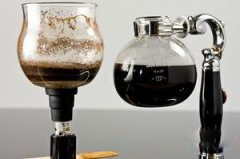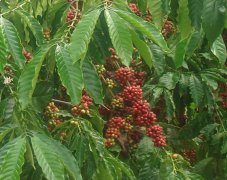Kaddura, a natural variety of bourbon
If you often look at the contents of coffee, you may see such names as bourbon / bourbon bourbon, yellow bourbon yellow bourbon, Kaddura Caturra, Kadouai Catuai, iron pickup Typica and so on. In fact, these are different varieties of Arabica coffee, people who are not clear may be somewhat confused, in fact, I am not a botanist or any coffee expert, so like everyone else, I am a little confused, confused and not afraid. So to learn, thank the omnipotent network for providing us with a lot of resources, so access to part of the information, slowly share with you.
Kaddura (Caturra), a natural variety of Arabica variety bourbon, was discovered in Brazil in 1937. Its tree is not as tall and shorter as bourbon. Due to inheriting the blood of bourbon, the resistance is relatively weak, but the yield is higher than that of bourbon. Although found in Brazil, Kaddura is not suitable for growing in Brazil, so it is not planted on a large scale in Brazil, but is popular in Central and South America, such as Colombia, Costa Rica and Nicaragua. Kaddura is widely planted in Brazil.

Compared with these botanical characteristics, people may be more concerned about the taste of Kaddura. At the site where Kaddura is planted, the higher the altitude, the higher the quality, but the corresponding yield is also less. When Kaddura is slightly roasted, the sour aroma is obvious and the whole is bright, and the sweetness can be very good with proper treatment, but the mellowness of coffee is relatively low compared with bourbon, and the cleanliness of the taste is a little less.

Kaddura usually has red berries, but there are very few areas with yellow Kaddura, such as Hawaii, where there are very few yellow Kaddura.

Important Notice :
前街咖啡 FrontStreet Coffee has moved to new addredd:
FrontStreet Coffee Address: 315,Donghua East Road,GuangZhou
Tel:020 38364473
- Prev

Coffee knowledge basic knowledge of making coffee in siphon pot
In 1840, a glass test tube in a laboratory triggered the invention of the siphon coffee maker (Syphon). The British took the test tube used in Biya's chemical experiment as a model to create the first vacuum coffee pot. Two years later, Mrs. Bachang of France improved the kettle with a little spring in shape, and the familiar upper and lower convection siphon pot was born. The siphon Syphon is Jane.
- Next

Basic knowledge of Coffee
The best growing area for coffee is between 25 degrees north latitude and 30 degrees south latitude. This region includes the heartland of many countries and parts of South America, Colombia, Africa, India, Asia, the Middle East and Hawaii. At present, there are about 70 coffee-producing countries, most of which are located at an altitude of 300400 meters, and coffee trees are sometimes cultivated in highlands at an altitude of 20002500 meters.
Related
- Beginners will see the "Coffee pull flower" guide!
- What is the difference between ice blog purified milk and ordinary milk coffee?
- Why is the Philippines the largest producer of crops in Liberia?
- For coffee extraction, should the fine powder be retained?
- How does extracted espresso fill pressed powder? How much strength does it take to press the powder?
- How to make jasmine cold extract coffee? Is the jasmine + latte good?
- Will this little toy really make the coffee taste better? How does Lily Drip affect coffee extraction?
- Will the action of slapping the filter cup also affect coffee extraction?
- What's the difference between powder-to-water ratio and powder-to-liquid ratio?
- What is the Ethiopian local species? What does it have to do with Heirloom native species?

